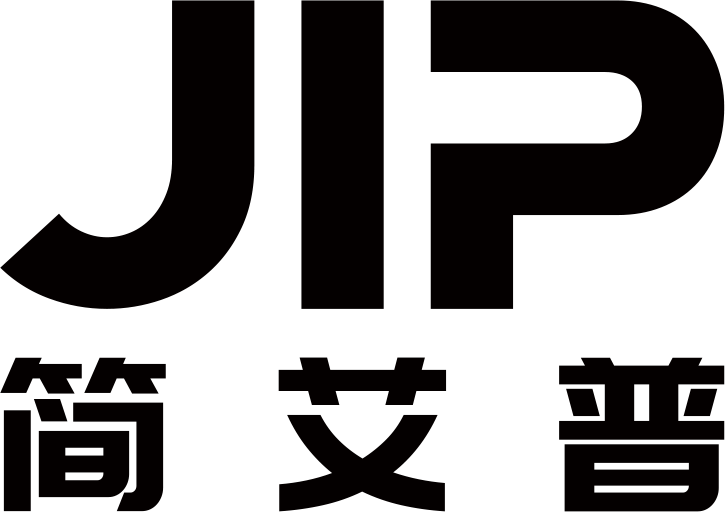Recommend
Who is to be responsible for the chaotic labeling of the textile and clothing market?
Release time
2024/05/18

Label is used to mark the description of product attributes, but also people understand the goods, identify the quality of the key. Careful consumers will find that there is often more than one label on the clothing sold on the market at present. In addition to the label attached to the clothing itself, the outer packaging of the clothing will also be attached with a label, and even some sellers will add a product description on the counter.
It is true that the more detailed the label, the more consumers can learn about the product. However, if the information marked on the internal and external labels of the product is inconsistent, the information on the label is inconsistent with the actual product, which brings a lot of confusion and trouble to consumers. Recently, the reporter visited the market and found that the current clothing labels are very chaotic. Not only is there no uniform standard for what to label and what not to label, but even the content marked on different labels of the same product will be quite different.
Status quo: self-contradictory, misnamed clothing market generally mislabeled
The Wuhan Evening News recently published a report saying that Gao Zhujun, a Wuhan citizen, spent 528 yuan on a shirt of the Sinumar brand in a shopping mall in Hanyang. After returning home, Mr. Gao found that the contents marked on the labels inside and outside of the shirt were contradictory. The inner label of the shirt is marked with 65% cotton content, while the outer sales label is marked with the prominent 100 pure cotton.
Mr. Gao paid 400 yuan at his own expense to send the product to the testing agency in Wuhan for inspection. The test report showed that the shirt cotton content submitted by Mr. Gao for inspection was 51.8 percent, and another 26.3 percent of polyester fiber and 21.9 percent of viscous fiber were inconsistent with the contents marked on the internal and external labels when purchasing the clothing. Coincidentally, in March this year, Hangzhou Daily Business Daily also published two similar reports, in which consumers also questioned the fabric content on the label, so they sent the purchased goods to professional institutions for testing, and the test results were indeed different from the label information.
It can be seen that the issue of textile and clothing labels has attracted the attention of the media and has been repeatedly reported. In order to further understand the problem of clothing labels, the reporter recently visited the clothing market in Weihai. Reporters in the United Road Pedestrian Street clothing market survey found that the market is currently selling clothing label confusion is very serious. Not only are the contents of the labels inside and outside the clothing inconsistent, and the labels are labeled at will, but there are even a considerable number of clothes on sale without labels.
In a clothing store on Haibin North Road, the reporter picked up a T-shirt at random and found that the outer label was marked with "75% cotton content and 25% polyester fiber content", but the small label on the inner collar showed "65% wool content and 35% anti-pilling fiber content". Not only are the compositions of the two labels quite different, but the prices of the two labels are also inconsistent.
Later, the reporter looked at other clothes, a pair of black trousers with the brand "natural edge". there was a white label marked "100%cotton" in the gap between the waist of the trousers. a black tag was hung on the outside of the trousers, and the brand: natural edge was simply marked on it. Grade: first class; Inspection: 02.
As for the clothing fabric composition and content and other important information is not marked. In response to the issue of clothing labels, the reporter consulted the sales staff in the store. The clerk said that she didn't know much about the details. It may be that the shipper put the wrong label on it. However, this phenomenon is very common and few consumers question it.
The reporter collected data and found that as early as March this year, Zhejiang Satellite TV's news investigation program had already reported and disclosed the behavior of some woolen sweater manufacturers to mark clothing labels indiscriminately. The receptionist of the manufacturer interviewed by Zhejiang Satellite TV reporters said that many brands directly wholesale woolen sweaters without labels from them, then go back and add a label, mark a wool content casually, then raise the price and sell them to the shopping mall, which will change or add labels according to its own sales needs. From this point of view, the current phenomenon of random labeling in China's textile and clothing market has become a secret known to everyone in the industry.
In addition to the confusion of clothing fabric composition and content labels, the reporter also learned that many washing labels of clothing on sale also have major problems. At present, many slightly higher-grade clothes on the market, no matter what material they are, will be marked with the words "dry cleaning only". It seems that dry cleaning has become a label for higher-grade clothes.
However, an industry insider in the dry cleaning industry told reporters that in fact, 70% of the clothes in the market are only suitable for washing, not dry cleaning. Only natural leather and wool, cashmere, silk and other vulnerable fibers need to be dry-cleaned, and other cotton and linen fabrics are more suitable for washing. "In order to show the quality of their products, many clothing manufacturers randomly put up washing labels, regardless of the actual material composition of their own clothing, and all label the words' dry cleaning' to mislead consumers." The industry insiders pointed out that there are currently no rigid regulations on the washing labels of textiles and clothing in China. Therefore, it is very common for many manufacturers to randomly label labels driven by interests.
Attribution: clothing labels are free to make relevant national technical specifications into "furnishings"
"Today's clothing tag is simply another layer of clothing packaging. In addition to the exquisite design and printing, I need to spend a lot of thought on the modeling materials. I have done tags of plastic, metal, rubber, leather, wood, even credit card special materials and anti-counterfeiting materials. Only when the tag shows the noble and elegant connotation of corporate culture, can the product appear on the grade and consumers can buy it comfortably." Regarding the current situation of random labeling in the textile and clothing market, Ms. Zhang, a designer who specializes in making clothing labels, told reporters.
According to Ms. Zhang, for the contents of the clothing tag, they are printed directly according to the data provided by the manufacturer, and do not need to provide professional test reports and related procedures. "The market is focused on profits, and now the business is not easy to do, and the competition is very fierce. In addition, the country of clothing label has not issued any rigid documents for our design company, and we can only produce what customers need." Ms. Zhang said frankly.
Subsequently, the reporter consulted relevant information and learned that in the new version of the National Basic Safety Technical Specification for Textile Products promulgated and implemented by the state since August 2012, there are no detailed regulations on the labeling content of different types of textile labels, only for special Textiles, such as the textile labeling regulations for infants and young children, make special requirements, and require them to meet the labeling requirements of the highest safety level A. However, from the perspective of the current clothing market, even for infant textile and clothing products with clear labels, the label forms are mixed, and the relevant national technical specifications are only "furnishings". There are still a considerable number of brands of infant clothing that are not labeled according to the standards.
In order to further understand the relevant reasons for the disorderly labeling of textile and clothing labels on the market, the reporter specially called the Weihai Consumer Association. The relevant staff of the Consumers Association told reporters that the current chaotic pattern of clothing labels has not been significantly improved: First, the supervision is weak and relevant laws and regulations are absent; second, the current relevant legal litigation regulations are not strict and detailed enough. As a result, consumers can not protect their legitimate rights and interests through legal channels, and can only get the result of private mediation and compensation.
For example, when consumers question that the fiber content of the clothing products they buy is inconsistent with the label, if they take their own way to send the clothing to the testing organization for testing, even if the test results show that the fiber content of the products submitted for inspection is indeed inconsistent with the label, this test report can not help consumers to win the corresponding rights and interests in legal proceedings.
"Consumers buy clothes from the mall and take them for inspection. In this process, no one can prove that the clothes are still the original." The staff member said with regret, so it is very likely that after consumers file a lawsuit, they will not be able to protect their own rights. Shopping malls basically see the psychology of consumers and seize this point to negotiate with consumers. Usually, such cases are mediated in private. This low-key approach has instead encouraged the relevant unscrupulous businessmen to continue to ignore the facts and paste clothing labels in order to make huge profits. On the whole, my country's relevant laws on consumer rights protection need to be further enhanced in order to protect the true rights of consumers.
Measures: Relevant laws and regulations need to be introduced to control the label confusion to increase penalties.
The ancients said: if you can change after passing, you will be very good! In view of the current chaotic situation of random production, random pasting and hanging of textile and clothing labels, the key point is to find out the reasons for the chaotic phenomenon of clothing labels and gradually improve the current situation of misleading consumers by random pasting and hanging labels in the market.
"Clothing label confusion is a very important and urgent problem to be solved in the textile and garment industry. Both the textile and garment management department and the consumer association should pay full attention to this matter. I personally think that the management of clothing label disorder is not a problem that can be solved by a department. It can only be realized with the high cooperation of the national legislative department, the quality inspection department and the industrial and commercial department. In view of the confusion of labels in the clothing market, the relevant departments of the state have fully combined with the actual situation of China's clothing market and issued relevant laws and regulations and relevant standards.
At the same time, the relevant state regulatory authorities should step up market rectification efforts, severely punish enterprises and sellers with confusing clothing labels, and safeguard the legitimate rights and interests of consumers." In view of the measures to control the confusion of labels in the clothing market, the staff of the Consumer Association stressed that it is necessary to attach great importance to multi-departments, closely integrate and jointly govern.
In addition, the staff member further reminded consumers that when choosing to buy textile and clothing products, they should not blindly believe in famous brands, but should take the initiative to choose clothing with high reputation and formal logo, and must ask for purchase documents after purchasing goods. Once the products are found to be inconsistent with the logo, they should actively call 12315 to complain and report to safeguard their legitimate rights and interests.
keywords
Next
Next
JIP SUPPLY CHAIN(WUXI) CO.,LTD.
Tel: 0086 510 81709666
E-mail: sam.shao@jipsupply.com
Address:
685 Yibei Road, Yicheng Street, Yixing City, Jiangsu Province







